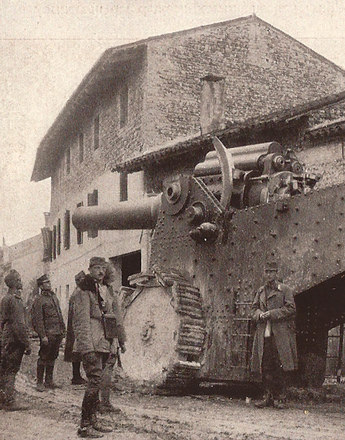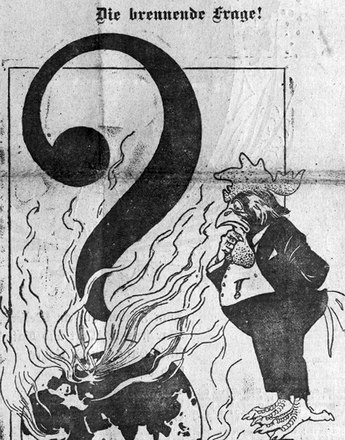An ‘industrial war’ lasting for years changes the structure of an economy, because it leads to the expansion of heavy industry, which in turn gives rise to problems in the peace economy after the war.
In economic terms, a war economy can be regarded as a process of excess strain on the gross national product in the form of consumption by the state, accompanied by a serious decline in real wages (and thus mass purchase power). This development is accompanied by strong growth of the armaments sector. In the Austro-Hungarian Empire, this part of the economy was, until 1914, concentrated on a small number of major enterprises – in the Austrian half of the Empire the Skoda works in Pilsen, Hirtenberger Munitionsfabrik, Waffenfabriks-Gesellschaft in Steyr and Stabilimento Tecnico Triestino. In the war, practically the entire heavy, mechanical engineering and metal industries worked for military requirements.
In the course of the rearmament process, there soon occurred regional shifts in production capacities. The economic problems of the start of the war affected all industrial regions of the Empire equally. In the course of the war, arms production was shifted for political reasons – Czech workers in Bohemia being regarded as unreliable – to the safer Vienna basin, in particular the region around Wiener Neustadt. This shift had far-reaching consequences for the post-war period. The difficulties in converting to peace production, further increased by the collapse of the Empire in autumn 1918, led to a rise in unemployment. But even where the adjustment to civilian production was approached rationally (as at the Steyr works in Upper Austria, where even during the war major investments had been made for post-war automobile production), the problems were large because the Empire’s huge market was no longer available.
Four years of the war had fundamentally changed the structure of the Austrian economy. While the pre-war period had been dominated by the production of consumer goods, after 1918 the larger part of industrial workers were in the heavy and capital goods industries. The war years had led to a collapse of investment in civilian production. Many enterprises, such as the Krupp works in Berndorf, had lost their traditional prewar sales markets, one of the major causes of the economic difficulties and persistent unemployment in the First Republic. In the mid-1920s, unemployment in the metal industry was 30%, the consequence of the unsolvable problems of the conversion to peace-time production and significantly higher than in paper production and the chemical industry, where it was around 3 to 4%. The collapse of the Empire amplified these problems, because it broke up the links between what were now ‘transnational’ production facilities and at a stroke challenged the traditional regional division of labour in the Danube area.
Translation: David Wright
Clark, Christopher: Die Schlafwandler. Wie Europa in den Ersten Weltkrieg zog, München 2013
Janz, Oliver: Der Große Krieg, Frankfurt am Main 2013
Jetschgo, Johannes et al. (Hrsg.): Österreichische Industriegeschichte 2. Die verpasste Chance. 1848–1955, Wien 2004
Koren, Stephan: Die Industrialisierung Österreichs, in: Weber, W. (Hrsg.): Österreichs Wirtschaftsstruktur gestern-heute-morgen, 1. Band, Berlin 1961, 265
Rauchensteiner, Manfried: Der Erste Weltkrieg und das Ende der Habsburgermonarchie, Wien/Köln/Weimar 2013
Rothschild, Kurt W.: Wurzeln und Triebkräfte der Entwicklung der österreichischen Wirtschaftsstruktur, in: Weber, W. (Hrsg.): Österreichs Wirtschaftsstruktur gestern-heute-morgen, 1. Band, Berlin 1961
Sandgruber, Roman: Wirtschaft und Politik. Österreichische Wirtschaftsgeschichte vom Mittelalter bis zur Gegenwart, Wien 1995
-
Chapters
- The underlying causes of the First World War
- The folly of the erstwhile rulers
- Schumpeter’s imperialism theory: Did big business press for war?
- A state living beyond its means
- Problems of the war economy
- High mark and decline of the economic war effort
- Shifts in the production structure
- The change in the social balance of power in the course of the war





